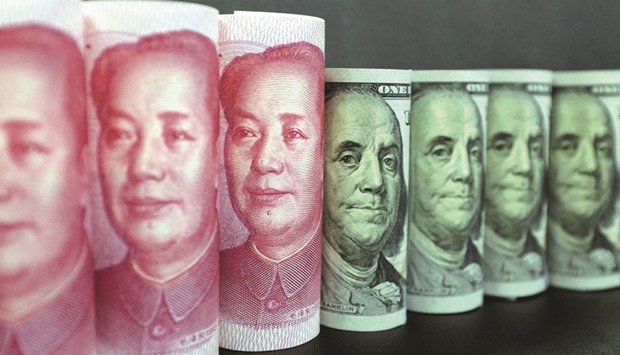China’s foreign-exchange reserves falling below $3tn doesn’t threaten its sovereign credit rating as the economy still has a healthy buffer, according to S&P Global Ratings.
“Reserves are more than ample to meet its external needs and liabilities,” Kim Eng Tan, a Singapore-based credit analyst, wrote in a note. “The country’s liquid external assets continue to outsize its total external debt by a comfortable margin, and the current account remains in a surplus position. This cushions the economy against potential shocks.”
China’s reserves, the world’s largest stockpile, edged down to $2.998tn in January, falling to the lowest since early 2011 after the yuan capped its steepest annual drop in two decades. That has raised questions and concerns among investors about potential knock-on effects on interest rates, credit growth, bank balance sheets and policy risk, Tan wrote.
The main risk associated with capital outflows and depreciation pressures is over-reaction by policy makers, Tan said. If authorities make major changes that reduce confidence, there may be more serious implications for economic and financial stability, he said, adding that credit metrics for the government may be hurt in such a scenario.
The reserves decline has contributed to a record drop in China’s holdings of US Treasuries as authorities in Beijing support the yuan. That has helped push US bond yields higher.
S&P last month maintained its negative outlook on China, citing increasing economic and financial risk that it said could cause a downgrade in coming months. The rating was affirmed as AA- with a negative outlook.
“As long as China’s leaders do not overreact to this trend, we do not see it posing a near-term risk to the sovereign ratings,” Tan wrote. “China has the flexibility to allow a depreciation of its exchange rate if capital outflows remain strong. It does not have to worry about a weaker currency since Chinese firms don’t rely much on foreign currency borrowing. So its forex reserves need not decline further even if outflows continue.”
As more money leaves the country, policy makers probably won’t cut the required reserve ratio that dictates how much banks must hold in reserve, S&P’s Qiang Liao, a Beijing-based banking analyst, wrote in the report with Tan.
“China’s leaders believe this would encourage capital outflows by sending out a strong signal of policy easing,” Qiang wrote. “As an alternative, policy makers have opted for liquidity injections through reverse repurchases and various central bank lending facilities to offset the tightening effect from capital outflows.”

One hundred US dollar banknotes and 100 yuan banknotes are seen in Beijing. China’s reserves edged down to $2.998tn in January, falling to the lowest since early 2011 after the yuan capped its steepest annual drop in two decades.
